Do Thai people eat “Pad Thai” everyday?
This is a question I’ve been asked for several times from my foreigner friends. The fact, that “Pad Thai” is the signature dish, most well-known out of other Thai foods. Every Thai restaurant must include it in their menus and as much being most popular dish being ordered from dinners.
I often laugh and throw the answer that NO, Pad Thai is not a staple dish that we cook to eat in household. Pad Thai is commonly sold and served in street food stalls and restaurants.
In Thailand, you can find many roadside food stalls or restaurants that are specialised in cooking Pad Thai and only serve it as a signature dish, or perhaps sell with some other noodle dishes such as Pad See Ew.
I noticed that Pad Thai being served in most restaurants in Australia has slightly more in color and flavour than originated Pad Thai. And I was so skeptical to find out why, so I tried to observe how it was cooked when I was working part-time in a Thai restaurant (It’s a must do when Thai students come to Australia!)
The secret is “tomato sauce”, to make the dish more appealing to Australians; tomato sauce is being added in most of Pad Thai.
However, my Australian friends do prefer the authentic taste Pad Thai where they had tried on their Thailand visits, especially the way it is being served from street stalls. Real taste, real made, real Thai street food style!
-Samantha Torsuwan
Ear-piercing ceremony
Myanmar boys are novitiated in the Shinbyu ceremony whereas the girls also have a ceremony in which ear lobes are pierced so they can wear ear rings when they come of age, also it represents the girls going into womanhood. Unlike the novitiation ceremony, this is more of a social event than religious event unlike for the Myanmar boys.
Traditionally, the girls have to wear costumes as those of princesses from the Myanmar olden days and for the piercing of ears, needles are use to pierce the ear lobes and these needles are made from pure gold. Only the women who are experienced are allowed to pierce the ears of the young girls but even then, this is of course still rather painful process. But now in the modern days, piercing guns are mostly used. In Myanmar, this is regarded as one of the most important ritual for a young female’s life apart from their wedding.
The ear-piercing ceremony normally coincides with the boys’ novitiation rather than being held on its own. The girl, usually a sister of the novices-to-be, can have her ears pierced on her own or in a group depending on the situation. On the day of the novitiation ceremony, the girl’s ritual is held before the novitiation so they can then join the procession.
Shinbyu ceremony
Shinpyu is a term used to describe a celebrating the ordination of their young Myanmar male (under the age of 20) into Buddhist order of the Sangha. For the preparation, during the mornings of Shinbyu, festival begins with the young boy cleansing oneself with a long bath then puts ritual make-up (thanakha) on the boy’s face. Thanakha is a yellowish-white cosmetic paste made from ground bark. The boy is then dressed in costumes as beautiful as those of the kings of old Myanmar. Once he is dressed, he is not allowed to walk so he is carried by their parents to a beautifully decorated horse, which only the young boy rides on. With traditional Myanmar music playing loudly, their ride to the temple begins. Followed by the young boy and their parents are parades of people carrying offerings for the monks.
At the temple, a monk shaves the head of the boy and they are then dressed in red or yellowish coloured monk’s robes. Now they repeat after the monk sayings in Pali. Pali is the Indian language of the accident Buddhist texts. The boy is to live at the temple for a week or more to learn the ways of Buddhism.
Myanmar’s Traditional Clothing
As Myanmar is a large country with diverse ethnic minorities in different regions, the people from each ethnic group have their own traditional clothing which represents their cultural and social status. The style of clothing is determined by the people of each state’s histories of their country, traditions and also their climate conditions.
Bamar – Bamar men wear a collarless jacket over a mandarin collared shirt, sometimes men wears hats called “gaung baung” for special occasions. For the bottom, instead of pants, they were skirt-like angle-length patterns of checks, plaids or stripes called “longyi”. Bamar woman wears a blouse buttoned at the front, called “yinzi” or the side folded blouse called “yinbon”. For the bottom, they wear longyi as well but they can be any sort of pattern or colour.
Mons – Mon longyi is in small checks on red, bordered with horizontal stripes at the middle.
Karens – Karens’ traditional longyi are similar to Mon peoples’, they are also solid reds bordered with horizontal stripes at the middle.
Chins – Their longyi’s are similar to Bamar peoples’.
Kachins – Their peoples’ longyi is in checks of black, green and deep purple.
Rakhines – Rakine longyi patterns fracture a thick, high- relief weave in light, reflective grays and blues.
Shans – Instead of longyi, Shan men wears loose trousers. Shan trousers have light brown, brown, grey or terracotta colour.
Kayahs – Kayah men also wears trousers, but the trousers are only in black.
Myanmar Language
Myanmar is a country of many languages. There are over one hundred languages and dialects spoken by the many peoples of Myanmar. The national language is Burmese (Myanmar language) and it spoken by majority of the population. Many people from other statues use their own languages at home and they use Burmese outside. The schools teach both Burmese and English, which is Burma’s official second language. In fact, most people are able to understand (speak and read) English to support two daily English newspapers in Rangoon (the main business center of Myanmar).
In the Burmese language, there are 33 consonants and 12 basic vowels. The 12 basic vowels can be extended with the use of two tone marks to 21 vowels. For Myanmar language, it is important to learn the use of tones. There are four tones and these are Creaky, which is the short and falling tone that ends with a weak closure of the glottis, Low tone, this is the long and level that may fall or rise at the end, a High tone, that is a long tone that starts high then falls slowly from the high to low pitch and lastly, we have the Stopped tone, it is a very short, high tone ending in a glottal stop.
The image below shows the Myanmar consonants.
Burma (Myanmar)
Burma, which is now known as Myanmar is bordered by China, Thailand, Laos and Bangladesh. Burma is the 2nd largest country in Southeast Asia with the current population of 55 million people. It consists of 7 states with 7 regions formerly called divisions.
With Bamar being the main state, the seven other states includes Karen, Shan, Rakhine, Kachin, Mon, Chin and Kayah and the seven divisions being, Thaninthayi, Yangon, Ayeyarwaddy, Bago, Magwe, Mandalay, and Sagaing.
Shans – Shans are ethnically related to the Thai people and they are the second largest population in Myanmar.
Mons – Mon people are one of Myanmar’s oldest civilizations. They established themselves as the most cultured people in South-east Asia at that time, as their art and architecture clearly show.
Karens – There are more than 2 million Karens in Myanmar and they were among the earliest inhabitants to descend from China down the Irrawaddy River into Burma.
Chins – they are a Tibeto-Burman people who inhabit the great mountain chain running up western Burman into Mizoram in north-east India.
Kayahs – Kayahs are one of the smallest national groups. Their name became well known due to their brightly coloured head-clothes or shawls that the territory gained its historic name of Karenni which today applies to all the Karen sub-groups in the state.
Kachins – Kachin people lives in the northern part of Shan state.
Rakhines – With Rakhine people, like the Burmese nationals, the Rakhines use Burmese as their national language whereas the people from the other states use their own language.
Myanmar country is well known for their natural gem stones. For example, mining from the Mandalay division, they have found some of the finest rubies the world has seen and beautiful sapphires, in Thaninthayi division the biggest pearl was discovered, and in the Kachin state, the largest jade dyke was found and many other precious stones are found in Myanmar. While gem stones are largely found in Myanmar, other sources such as copper, iron, bronze are found from the country.
Advice for the Speaking Test
The IELTS Speaking test is just like a job interview; you enter, exchange pleasantries, have a serious conversation, exchange pleasantries then leave. A job interview is to prove to the employer you deserve the job, a Speaking session is to prove you deserve a certificate. It’s purely business; you are not there to be the listener’s best friend. You need to show them you’re a serious person, you know what you want and you will do your best to win it.
Speaking isn’t just about what you say, it’s also about how you say it. You might get a question on a topic you know a lot about. This is great, but your answer won’t help you at all if people don’t understand what you’re saying. You need to get your voice to volume between whisper and shouting; in other words a moderate level. You need to keep your speed at a moderate pace; no-one (aside from friends and family) can understand you when you speak too fast. This applies to IELTS examiners. It is better to be too slow than too fast, but you will improve your chances if your speed is at a middle rate. Fluency is important; don’t give long pauses, too many pauses, or run the words together. This damages the flow of the speech. Pausing is good when you’re not sure what to say, but the time and amount of the pauses should be as low as possible. Try not to repeat sentences or standout words, this will look unoriginal. When you pronounce words, remember they do not always sound as they look.
“kn”= sounds like “n”
“h”= is silent when next to “o” sometimes. For example hour and honour. Other times it isn’t in words such as “home”, “house” and “horse”.
There is no problem if you want to use big words, fancy words, or academic words, that is a decision for you. Your marks will not go up for the words, the marks will go up because you say the words correctly. However you can still achieve good results if you give a basic answer as long as it is spoken well. Speaking is about QUALITY, NOT QUANTITY.
If you receive a speaking topic you don’t like but know about, give an answer. Don’t ask for a new set of questions just because you don’t like it or you may receive a topic you know nothing about. The test is not a knowledge test, but you will benefit if you have information on the subject. You should only change the questions if they are genuinely difficult. You should have an idea on whether a subject is too hard or not.
A good way to answer each question is to give a statement (“Yes I do”, “I’m not sure” etc) an explanation (“I did it in…”), and maybe an example (“For example when I needed to look for essay information..”). The statement and explanation are the most important parts however an example could help.
It isn’t just about what you know, it’s using what you know. Speaking is also about presenting the words, and managing the words.
-Nicholas John Gysi
The two most important things examiners are looking for for A level writing
In my years of teaching OET, I have marked many referral letters and I have found two key features that distinguishes the truly excellent writers from the not so excellent writers. The two features are 1. CLARITY and 2. ORDER.
When students write legibly, use correct spelling, punctuation, syntax, letter format, paragraphing, grammar and expression of their ideas there is CLARITY. I can not emphasis enough, though these aspects may seem minor and therefore unimportant, they are not. This is what differentiates between a winning writer and a non-A grade. Furthermore, for a marker with hundreds of papers to grade, anything to make it easier for the examiner to read is CONSIDERATE. This in turn will ultimately win the favour of your examiner over the hundreds of candidates who do not take these things into consideration.
Secondly, when students are able to organise the list of patient file information into clear paragraphs, that contain only the most relevant and grouped information, it is ORDERED. Think of it like cleaning. When you clean, you sort the socks into one pile, the shirts in another etc. In the same way, even though there maybe a whole list of medical history or presenting complaints, consider,
– if it is a lengthy chronic disease history, to place the most significant turn of events into each paragraph chronologically,
– if it is multiple disease states, to group their progression, treatment and outcomes in each paragraph per disease.
There are many other ways of ordering the body of the letter, which we teach you at OET because each patient file is so different. All in all, the most sophisticated writings are the ones where there is a logical order in which the patient’s case is depicted.
My last tip for today is that as with anything in life, begin every act with love for the other person in mind. In the case of OET, mindfulness of the circumstances and desires of the examiner. They want to read through a letter quickly and smoothly without having to stop here and there because they can not understand something. So make sure, if you have time at the end, to proof read and check that all the above mentioned is done. Clear understanding, isn’t that the core of communication?
Some Stories About Our Japanese Course 12
Hi everyone, 皆さん、こんにちは。
My Japanese classes and lessons include the usual kinds of activities that aim to develop speaking, reading, listening, writing and making and performing dialogues. Apart from the usual course book, Genki 1, I used A First Couse in Japanese (by Fudeko Reekie) and Busy People Book 2 for vocabulary concerned with time, days/dates, months and sentences that have those words. Among those, a couple of pages of Japanese for Busy People, Bk 2, pp. 60-61 are one of my favorite. They list the phrases that are commonly spoken in everyday life with the cute/friendly/neat pictures with. And they have a many different verbs used in the sentences. Their contexts are more of adults’ life, but they can be used for school students too. Especially the phrases such as “Uchi de nonbirishimasu.” (=I’ll have relaxing time at home), “Tomodachi to oshaberi o shimasu.” (=I’ll chat with my friend) are my favorite ones. I used many Japanese textbooks in the past (and did research for my academic study, but it seemed some phrases, which are commonly spoken in Japanese people’s daily life, are not in many textbooks unless the linguistic level is high. I think listing the above phrases is desirable.
Also, some of useful pages used in my classes (including tutorials or class that had students who were going to Japan soon) were: a list of many kinds of products at a department store that was on p. 136, A First Course in Japanese. The names of all sorts of products commonly seen at big department stores in Japan are written in Hiragana, Katakana and Kanji. They were very useful that is for making sentences.
Similarly, I taught dialogues at a restaurant, in some classes. That is with p. 158 and 159, of the above mentioned book. They are dialogues between a waitress/waiter and customers who wish to order food and drinks and dialogue that is spoken after the meal and for paying the bill at the restaurant. Those will be useful for people who are going to Japan for trips or for living in Japan.
In addition, I taught how to ask or answer about the departure time and arrival time of trains/bullet trains with use of the Jikoku-hyo (Train-timetable of the JTB).
Magazine Jentahad interesting articles/news and I referred to that in classes. One of them was “Enjoying Mt. Fuji”, 27 July, 12, p. 4. It talked about Mt Fuji, , surrounding of it, well known Fuji-Q Highland where I had worked for part time jobs at the skating centre and swimming pool. The above very big amusement park has fascinating facilities and not far from Tokyo.
I taught 4 ~ 5 Japanese songs to most of classes. Most of them are well known children’s songs and they have many plain forms, “many” word of onomatopoeia, sensitivity and emotions for nature or living things etc. And I think singing such songs in relaxing or uplifting music of cd with use of Hiragana based handouts is useful.
Also, I talked about the famous statue of Chuuken-hachiko that is in front of Shibuya Station, Tokyo. It was reported in The Japan Times (17.6.12, P.11). An “amazing” dog that passed away in 1935 (he saw his statue well before his death.) He was a bit similar to the Red Dog, the famous dog in Australia that was portrayed in the movie.
Japanese Teacher, Toshiko Jackson
4.9.12
Relationship talks in Korean
Are you interested in going out with Korean boys/ girls? Then read the following expressions!
Today, let’s talk about some expressions regarding relationships.
It was love at first sight. 우린 서로 첫눈에 반했어요.
Would you like to go out with me? 저랑 사귈래요?/ 나랑 사귈래?
I love you. 사랑합니다/ 사랑해요/ 사랑해
I’m crazy about you. 당신에게 반했어요.
We’re a match made in heaven. 우린 천생연분이야.
We split up. 우린 헤어졌어요.
Would you marry me? 저랑 결혼해 줄래요?/ 우리 결혼 하자.
He broke up with me. 나는 그에게 차였어요.
Good luck!
Written by Eun Kyeong Ashley Jang (Korean Teacher)
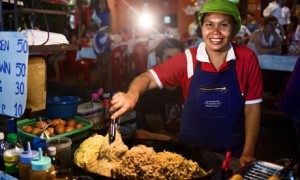
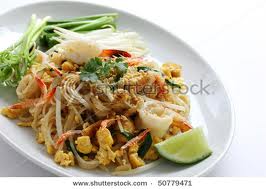
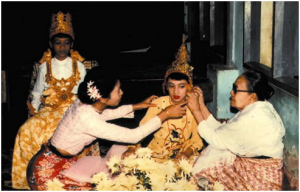
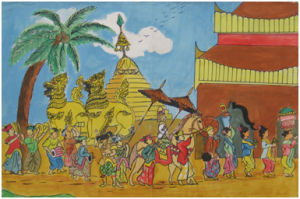
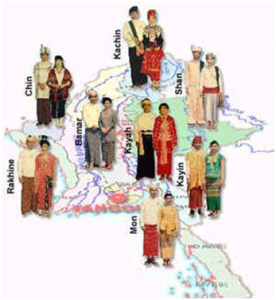
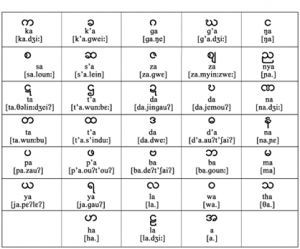
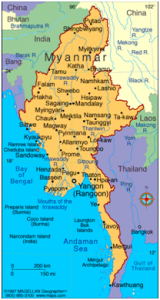






Latest Comments